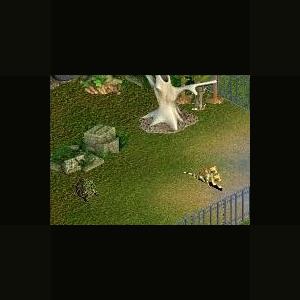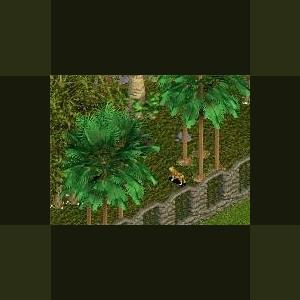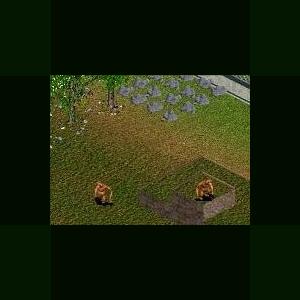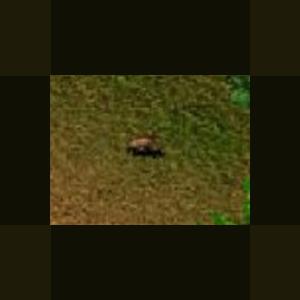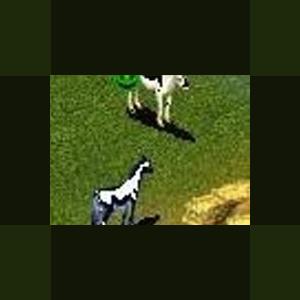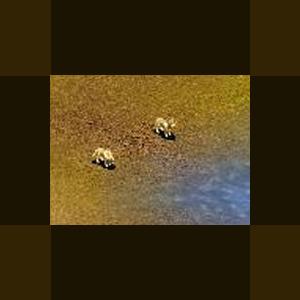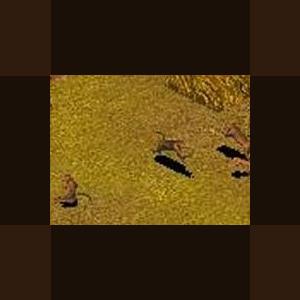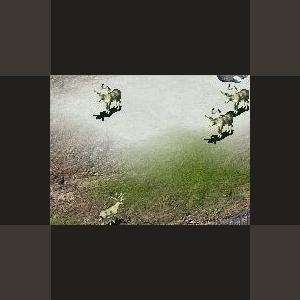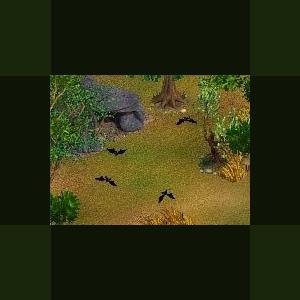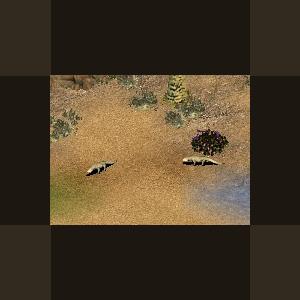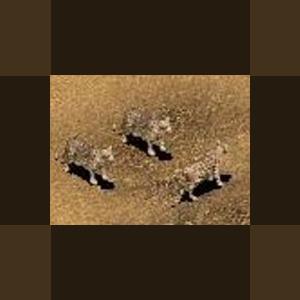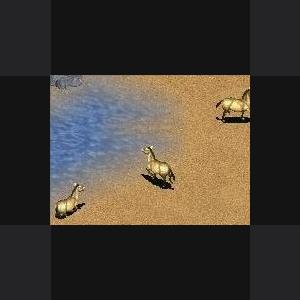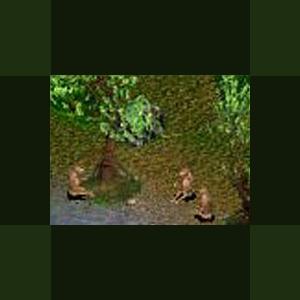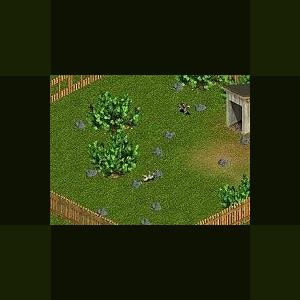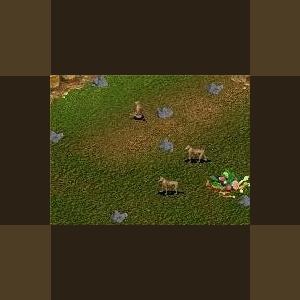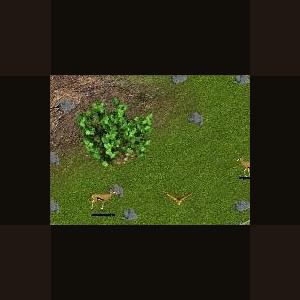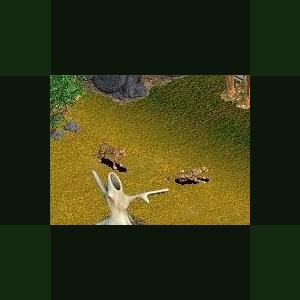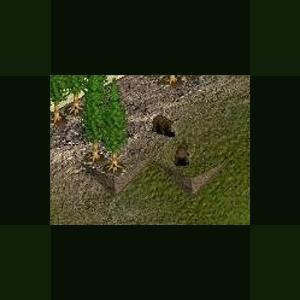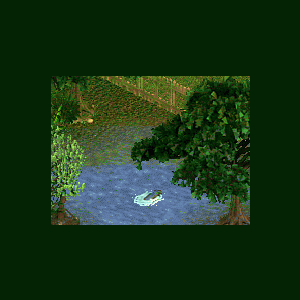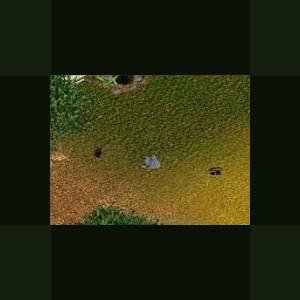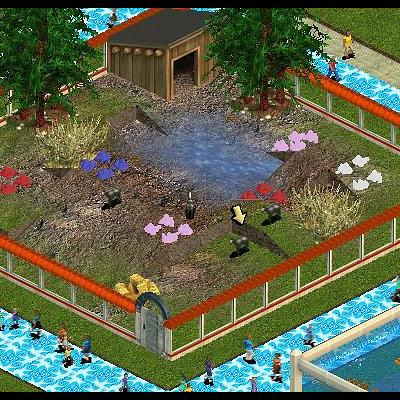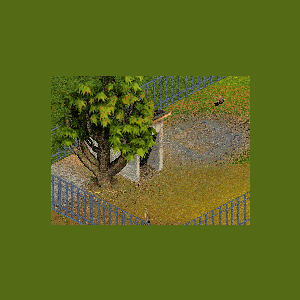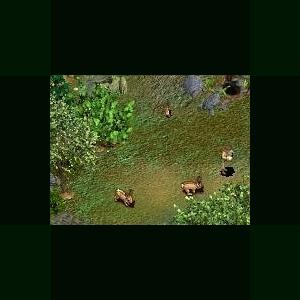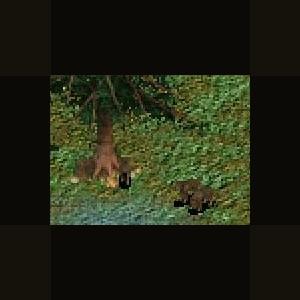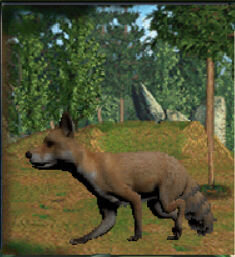279 files
-
Ocelot by Kiger Cowgirl
By Guest
Ocelot by Kiger Cowgirl
This small cat from the Americas is endangered due to hunting for it's beautiful spotted coat.
The ocelot (Leopardus pardalis) is a small, spotted cat that ranges from northern Argentina up through the southernmost parts of Texas. They live in a wide variety of habitats including rainforests, montane forests, thick brush, semi-deserts, and coastal marshes.
Updated 2010-11-05
Just to save space with less in zip and smaller image.
Nothing new.
503 downloads
0 comments
Updated
-
Oncilla by Coolperson5
By Guest
With a silhouette and footprint resembling a house cat, the oncilla is small, having an average weight of 2.5 kg, with males slightly larger than females. The oncilla closely resembles the margay, and the two can be difficult to distinguish in the field. The two cats are similarly marked, but the oncillas pattern of rosettes tends to be less dark and blotchy than the margay's, its fur is not as thick, its body is more slender, and its tail not as long. Melanistic individuals are occasionally reported. Prey consists of small mammals (rodents and shrews), birds, small reptiles, and amphibians. Oncillas have been reported to prey on small primates in Brazil.
After a gestation period of about 75-78 days, the female oncilla will give birth to a litter of one to three cubs with one as most common. Born blind, the kittens eyes will open at approximately ten days of age. The kittens will be nursed until about 12 weeks of age at which time they will begin an exclusive diet of prey items brought to them by their mother. The kittens will stay with their mother until they are about one year of age. sexual maturity for females occurs at about 12-15 months of age, and at 18-24 months for males. In captivity, oncillas have been known to live up to 20 years. In the wild, they probably live until about 12 to 15 years of age.
The oncilla shows a strong preference for montane cloud forest, in that it is found at higher elevations than the ocelot and margay. In eastern Brazil, it is present in the subtropical forest highlands. There are also reports it has been found in early secondary forests and abandoned eucalyptus plantations, in areas close to human settlement, and highly affected by deforestation and fire. Oncillas have also been found in semi-arid thorny scrub in north-east Brazil and in dry deciduous forest in northern Venezuela. To what degree the oncilla uses lowland moist forest is not clear, especially within the Amazon basin. It has not been reported from this area.
the oncilla appears to have a naturally disjunct distribution, although further research is necessary to confirm this. The northernmost record is from northern Costa Rica, near the Tapantm Cloud Forest Faunal Refuge. It has been recorded from northern Panama, but the remainder of the country appears to be a gap in the species' range. The oncilla is probably found throughout Panama, as habitat there is suitable. There are only two museum specimens for Ecuador and Peru. There are no museum records for Bolivia.
There is little known about the population status of this species. This species has never been studied in the wild, and there is little understanding of its habitat requirements, density, and coexistence with other small cats. It has been trapped in large numbers for the fur trade -- in 1971, 28,000 pelts were counted in Brazilian warehouses, and in 1983, 84,500 skins were exported from Paraguay --although it is likely that other spotted cat pelts were mixed with oncilla. It is rarely seen by field biologists.
The oncilla is protected over part of its range with hunting prohibited in Argentina, Brazil, Colombia, Costa Rica, French Guiana, Paraguay, Suriname, Venezuela. It has no legal protection in Ecuador, Guyana, Nicaragua, Panama, or Peru.
It is difficult to assess threats to the oncilla when so little is known about it. Coffee plantations are often established in cloud forest habitat, but observations of it in deforested areas and eucalyptus monoculture on the outskirts of Sao Paolo suggest tolerance of habitat alteration. Although international trade effectively ceased after 1985, 675 spotted cat skins, mainly oncilla, were seized in Brazil, but came from Paraguay. The age of the pelts, however, was not ascertained.
Updated 2010-11-05
Just to save space with less in zip and smaller image.
Nothing new.
Update: 5 June 2011
Updated by johnrn1 to have it no longer be invisible, to have it not be configured as a jumper (since it does not have jumping graphics), to have the preferred object tooltip appear for the female and young, to have it play in-game sounds when picking up and placing it, to make the configuration file more efficient, and to correct grammar problems in the tooltip and animal info text.
338 downloads
Updated
-
Orang Pendek by Jordan
By Guest
The orang pendek is an orangutan-like cryptid from the island of Sumatra.
The orang pendek is fully compatible with the orangutan for those inclined to making mixed exhibits
Updated 2010-11-05
Just to save space with less in zip and smaller image.
Nothing new.
279 downloads
0 comments
Updated
-
Paca by Ghirin
By Guest
Paca
Author: Ghirin
The paca (Agouti paca) is a large rodent native to the torpical portion of the Americas. The paca's fur is brown with up to four rows of horizontal white spots. The belly fur is white. These animals are solitary and nocturnal. They prefer to live near swiftly-flowing streams. Pacas are frequently preyed upon by large predators such as the jaguar and often swim to escape from danger.
Vital Statistics:
Weight - up to 18 kg.
Habitat - Tropical rainforests, prefers areas near fresh, running water.
Shelter - Simple tubular burrow.
Food -- Fruits, leaves, stems, roots.
Number of offspring - 1.
References:
Walker's Mammals of the World. Nowak, 1999.
Created by Ghirin 2004
Updated 2010-11-05
Just to save space with less in zip and smaller image.
Nothing new.
233 downloads
0 comments
Updated
-
Painted Horse by Sundance
By Guest
Painted Horse by Sundance
What's the difference between a pinto horse and a paint horse? Nothing. Although Paint usually is used to describe a registered pinto horse of Quarterhorse and/or Thoroughbred horse breeding, Pinto markings can be found in about any breed.
The British use the terms skewbald and piebald to describe pintos. A skewbald horse is a horse of any other color than black with white spots, while the piebald is a black horse with white spots. Genetically, there are four major paint patterns, the overo, the tobiano, and the much neglected sabino and splash white.
works with zt, dd, mm and cc
Updated 2010-11-05
Just to save space with less in zip and smaller image.
Nothing new.
371 downloads
0 comments
Updated
-
Pale Fox by Ghirin
By Guest
Pale Fox
Author: Ghirin
The pale fox (Vulpes pallida) is native to the southern portion of the Sahara desert and the semi-arid regions south of that desert, including thorny savannah and steppes. They are primarily a nocturnal species and tend to be social animals, building large communal burrows with tunnels that may be up to 15 meters long.
Pale foxes will eat a wide variety of foods, including insects, reptiles, eggs, small mammals, and fruits.
References:
Walker’s Mammals of the World, Nowak, 1999.
Created by Ghirin 2003
Updated 2010-11-05
Just to save space with less in zip and smaller image.
Nothing new.
293 downloads
0 comments
Updated
-
Patas Monkey by Ghirin
By Guest
Patas monkeys (Erythrocebus patas) live in the open savannah country of western Africa. They have distictive reddish fur and spend most of their time on the ground. These monkeys have long limbs and are fast runners.
*Inspired by the Zoo Tycoon Brains Trust at the Zoo Tek Forums
Reference:
Bonadio, C. 2000. "Erythrocebus patas" (On-line), Animal Diversity Web. Accessed February 20, 2005 at http://animaldiversity.ummz.umich.edu/site/accounts/information/Erythrocebus_patas.html.
Created by Ghirin 2005
Updated 2010-11-05
Just to save space with less in zip and smaller image.
Nothing new.
297 downloads
0 comments
Updated
-
Peary Caribou by Ghirin
By Guest
The Peary caribou (Rangifer tarandus pearyi) is the northernmost subspecies of caribou. It lives on the islands of the Canadian Arctic Archipelago and is the smallest subspecies of living caribou. The Peary caribou's coat changes color with the season. In the winter, the coat is white to blend with the snowy habitat. The summer coat is slate gray with white underparts.
The habitat of the Peary caribou is treeless. In the summer, the caribou forage in moist areas such as the slopes of river valleys and upland plains for grasses, sedges, and willows. The caribou forage in higher areas in the winter where the snow is thinner and easier to dig through.
Created by Ghirin 2003
Updated 2010-11-05
Just to save space with less in zip and smaller image.
Nothing new.
380 downloads
0 comments
Updated
-
Pemba Flying Fox by Genkicoll
By Guest
The Pemba flying fox is a large fruit bat weighing 400 - 650 g (0.9 - 1.4 lb). Its diet consists of the fruit and flowers of a number of plants.
Primary and secondary forest, graveyards and mangroves provide roosting sites. The Pemba flying fox is very social and has been found in large colonies until recently.
The Pemba flying fox is found only on Pemba Island, Tanzania. The island was originally forested, but only remnants of the primary forest remain. Estimates of the status of the Pemba flying fox have varied considerably recently. Studies in 1989 suggested a dramatic population decline, with fewer than 10 individuals being seen, and the species was considered to be on the brink of extinction. However, in 1992, surveys indicated a population in the region of 2400-3600, although it was estimated that the population may have declined significantly in the preceding decade. (Entwistle & Corp 1997)
Habitat loss from deforestation is a major concern, since the last fragments of natural forest are now in danger of disappearing (Seehausen 1991). Pemba islanders hunt bats only for subsistence purposes, not for commercial purposes. Currently, the villagers appear mainly to use traditional hunting methods. If the use of shotguns increases, hunting could become more of a threat.
Source: Professor Paul's Nature Encyclopedia
Many thanks to Ziggy for the original gif animations.
Updated 2010-11-05
Just to save space with less in zip and smaller image.
Nothing new.
490 downloads
Updated
-
Perentie by Volksdragon
By Guest
Perentie by Volksdragon
Perenties are fairly large Australian lizards in the monitor family.
Perenties are fairly large lizards in the monitor family. They come from the deserts and scrublands of Australia
Updated 2010-11-05
Just to save space with less in zip and smaller image.
Nothing new.
396 downloads
Updated
-
Persian Leopard by Moondawg
By Guest
Persian Leopard
The Persian leopard (Panthera pardus saxicolor), or Iranian leopard, is one of the leopard subspecies native to western Asia. It is endangered throughout its range in the Middle East.
The Persian leopard is said to be the largest of all the subspecies of leopards in the world. It can grow to up to 1.5 to 2.7 feet tall at the shoulder, and weigh as much as 155 lbs. Before 1990, when Armenia, Azerbaijan, Georgia, Russia, and Turkmenistan were the Soviet republics, the scientific names of the leopard used in these countries were P.p. tulliana and P.p. ciscaucasica, whereas the name P.p. saxicolor had been traditionally used by the western specialists for the cats in Iran and, partially, Afghanistan. There are currently a few hundred left in the world.
It is found in Iran, Azerbaijan, Armenia, Turkmenistan, Uzbekistan, Tajikistan, and northwestern Afghanistan. Habitat varies from mountain steppe to grasslands, or anywhere having a reasonable amount of cover and a supply of prey. Unconfirmed reports of big cats in the far southeast of Turkey might also pertain to these animals; see the Caspian Tiger article for details.
Updated 2010-11-05
Just to save space with less in zip and smaller image.
Nothing new.
487 downloads
0 comments
Updated
-
Persian Onager by Ghirin
By Guest
Persian Onager by Ghirin
The Persian onager (Equus hemionus onager or E. onager) is one of the wild equines found in Asia.
This animal is well adapted to dry habitats such as scrub, desert, and dry steppes.
References:
http://nationalzoo.si.edu/publications/zoo...equidprimer.cfm
http://en.wikipedia.org/wiki/Onager
http://www.americazoo.com/goto/index/mammals/343.htm
http://www.sandiegozoo.org/animalbytes/t-wild_ass.html
Professor Paul's Nature Encyclopedia
*Inspired by the Zoo Tyccon Brains Trust at the Zoo Tek Forums.*
Updated 2010-11-05
Just to save space with less in zip and smaller image.
Nothing new.
343 downloads
0 comments
Updated
-
Pig-tailed Macaque by Ghirin
By Guest
The pig-tailed macaque (Macaca nemestrina) is named for its short tail which curves over it's rear in an inverted "C"- form. This macaque dwells in both primary and secondary forests of southeast Asia, including Burma, Malaysia, and Sumatra. Their habitat ranges from coastal wetland forest to dry moutain forest up to 1700 m.
Pig-tailed macaques are mainly fruit eaters, but will also accept seeds and invertebrates as food.
Updated 2010-11-05
Just to save space with less in zip and smaller image.
Nothing new.
246 downloads
0 comments
Updated
-
Prairie Coyote by Coolperson5
By Guest
The coyote (Canis latrans, meaning "barking dog") also prairie wolf is a member of the Canidae (dog) family and a close relative of the Gray Wolf. There are 19 recognized subspecies of coyotes. Coyotes are native to North America and are found from Alaska to Panama. European explorers first encountered these canines during their travels in the American Southwest. They may occasionally assemble in small packs, but generally hunt alone. Coyotes live an average of 6 to 10 years. The word "coyote" was borrowed from Mexican Spanish, which itself borrowed the term from the Nahuatl (Aztec) word coyotl. The collective name for a group of coyotes is a band, a pack, or a rout.
The coyote looks very similar to the endangered red wolf in profile. They have similar size, color and head shape.
Despite being extensively hunted, the coyote is one of the few medium-to-large-sized animals that has enlarged its range since human encroachment began (another is the raccoon). It originally ranged primarily in the western half of North America, but it has adapted readily to the changes caused by human occupation and, since the early 19th century, has been steadily extending its range. Sightings now commonly occur in California, Oregon, New England, and eastern Canada. Coyotes have moved into most of the areas of North America formerly occupied by wolves, and are often observed foraging in suburban trashcans.
Updated 2010-11-05
Just to save space with less in zip and smaller image.
Nothing new.
352 downloads
0 comments
Updated
-
Proboscis Monkey by Jordan
By Guest
Proboscis Monkey by Jordan
Proboscis Monkey
Large-nosed rain forest monkey of Borneo
Updated 2010-11-05
Just to save space with less in zip and smaller image.
Nothing new.
322 downloads
0 comments
Updated
-
Pronghorn by Coolperson5
By Guest
Pronghorn by Coolperson5
The Pronghorn is an antelope-like creature of North America. It is a preview for my Grassland Pack
Updated 2010-11-05
Just to save space with less in zip and smaller image.
Nothing new.
368 downloads
0 comments
Updated
-
Pumapard by Jordan
By Guest
The pumapard is a hybrid, the result of a female leopard breeding with a male puma, or mountain lion.
Updated 2010-11-05
Just to save space with less in zip and smaller image.
Nothing new.
233 downloads
Updated
-
Pygmy Brown Bear by Ghirin
By Guest
Pygmy Brown Bear by Ghirin
The pygmy bear is a cryptid bear from South America.
This is a small brown bear that might be related to the spectacled bear or a dwarf species of brown bear.
*Inspired by Professor Paul's Nature Encyclopedia at the Zoo Tek Forums*
References:
http://www.ppne.co.uk/index.php?m=show&id=21119
Updated 2010-11-05
Just to save space with less in zip and smaller image.
Nothing new.
233 downloads
0 comments
Updated
-
Pygmy Hippopotamus by Ryno
By Guest
Pygmy Hippopotamus by Ryno
The Pygmy Hippopotamus (Choeropsis liberiensis or Hexaprotodon liberiensis) is a large mammal native to the forests and swamps of western Africa
Updated 2010-11-05
Just to save space with less in zip and smaller image.
Nothing new.
607 downloads
Updated
-
Pygmy Hog by Jordan
By Guest
The pygmy hog is a critically endangered member of the pig family found only in the Assam area of India.
Updated 2010-11-05
Just to save space with less in zip and smaller image.
Nothing new.
259 downloads
0 comments
Updated
-
Pyrenean Chamois Goat Antelope by JohnT
By Admin Uploader
Thank you for downloading the Pyrenean Chamois Goat Antelope Your zoo guests will have hours of fun watching these sure-footed animals romp easily over the hills and cliffs of their exhibit.
Move the .ztd file into the dlupdate (and not dupdate) folder if one exists in your Zoo Tycoon folder; otherwise move the .ztd file into the Updates folder that is in the Zoo Tycoon folder.
The default is C:\Program Files\Microsoft Games\Zoo Tycoon
Thank you to Fern and Jay for their invaluable guidance.
--JohnT--
97 downloads
0 comments
Updated
-
Quokka by Ryno
By Guest
Quokka by Ryno
In the wild, its roaming is restricted to a very small range in the South-West of Western Australia.
Updated 2010-11-05
Just to save space with less in zip and smaller image.
Nothing new.
257 downloads
Updated
-
Rabbit by African Raptor
By Guest
Rabbit
Author: African Raptor
Just in time for Easter, a special creation from African Raptor. This adorable rabbit will charm your guests. Enjoy!
Updated 2010-11-05
Just to save space with less in zip and smaller image.
Nothing new.
658 downloads
0 comments
Updated
-
Raccoon Dog by Ghirin
By Guest
Raccoon dogs (Nyctereutes procyonoides) are considered by some authorities to be the most primitive members of the dog family. In appearance, they resemble raccoons. Raccoon dogs do display most of the characteristics of other canines; however, they cannot bark. They live in pairs or small family groups of the parents and their cubs. They prefer to live in moist, heavily forested regions and are omnivores.
Raccoon dogs are native to eastern Asia. The species has been introduced to western Eurasia by the fur industry and has become established in its new home.
In Japan, the raccoon dog is called tanuki and features in folks tales and traditional medicines.
Reference:
www.lioncrusher.com
Photograph:
http://www.aoba.sakura.ne.jp/~momoncyo/zoo/animal_raccoon_dog.htm
Created by Ghirin 2003
Updated 2010-11-05
Just to save space with less in zip and smaller image.
Nothing new.
411 downloads
0 comments
Updated
-
Red Fox by Khaydar
By Khaydar
Adopt a Red Fox (Vulpes vulpes) for your zoos.
Red Fox description:
Minimum happiness needed for chance of breeding: 95.
Liked foliage:
Spruce Tree, Yellow Cedar Tree, Lodgepole Pine Tree, Maple Tree
Liked rock:
Large Rock, Small Rock - Medium, Small Rock - Small, Coniferous Forest Rock
Animal can jump.
Animal can climb cliff.
Number of animals allowed per exhibit: 1-3 with 35 squares each.
A suitable exhibit for 2 of this animal has 70 squares containing terrain of:
34 Deciduous Floor, 4 Fresh Water, 18 Grass, 14 Coniferous Floor
using 10 grid squares filled with 4 Spruce Tree most liked plant
and using 6 Small Rock - Small most liked rock.
Preferred shelter: Large Burrow.
Credits to Hendrix for the model and mesh
Made by Khaydar
252 downloads
- living animal
- canid
- (and 1 more)
Updated

